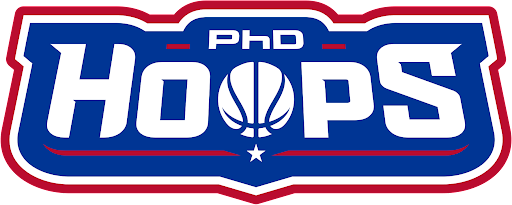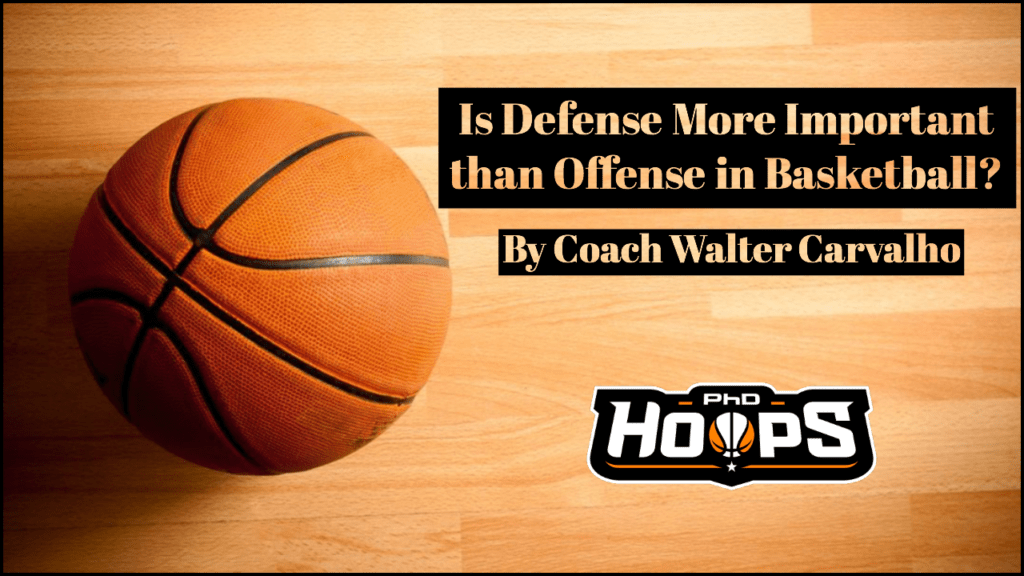By Coach Walter Carvalho (originally appeared on coachwaltercarvalho.wordpress.com)
Much has been debated on the importance of defense and offense in basketball. Some argue that offense is more important than the defense because the objective of the game is to score more points than the opponent. Others argue that the defense is more important because you have to be able stop the opponent’s offense from scoring to win the game.
I believe that in high-level competition, the coach must adopt a game philosophy based on a balanced offense and defense, one that fits the technical development and characteristics of his players/team.
As a coach, I develop my offensive and defensive systems based on the following objectives:
- Defense – Minimize opponents possession time and shooting percentage per possession;
- Offense – Increase team’s shooting percentage and shot attempts per possession.
To achieve the above goals, I base my team strategies on the opponent’s individual and team characteristics.
Defensively, I do not believe that all opposing players must be defended the same way because their individual characteristics and importance to their team vary and not all players have the same skills and abilities to score.
My defensive system includes combined and pressure defenses with the objective of:
- Controlling the rhythm of the game.
- Forcing the opponent to make unexpected adjustments to their offensive scheme during the game.
- Minimizing top scorers offensive touches per ball possession.
- Denying point guard control and offense balance.
Of course, our defensive objectives will not be reached if we can not rebound and control the boards.
Offensively, I believe that we must produce more high percentage shot attempts than our opponent. A high percentage shot isn’t the one always closest to the basket but the one taken by a player in his/her area of strength/specialty.
I like my teams to have an efficient and rapid transition game. I am an advocate of implementing a game rhythm and flow that is not based on patterned half-court offense schemes (refer to my Flow-Ball philosophy) but in filling the 5 lanes of access to the basket
My teams are trained to move and cut to the basket with continuous ball and man movement attacking the rim by utilizing acute cuts, picks and screens away from the ball. Note that I am not an advocate of the pick-and-roll due to the fact that it brings 4 players to the ball making the team action more static and predictable.
One of our main objectives at the offensive end is to force the opponent’s best scorers to play defense and foul out early in the game. We also like to explore mismatch situations by forcing the opponents big men to play away from the basket where most are more vulnerable.
In summary, my offensive system is not patterned and it includes continuous transition flow from defense to offense without having to resort to a half-court set play.
Playing this way has made my teams less predictable and harder to be defended due to the fact that my players are trained to be specialists of the sport and not of the position regardless of their height.
By training them to be specialists of the sport, they can better explore the impact of their individual skills and abilities over the defense at a level of efficiency and execution that is dufficult to be defended and matched up.
Our defensive and offensive team goals (Game plan) do vary according to the characteristics of our opponents.
The unpredictability that “Flow-Ball”, my game philosophy, brings to the floor during the games is always an advantage making it much harder for opposing teams to prepare to play us.
As the Director at WA Sports Consulting www.waportsconsulting.com, and the Birmingham Basketball Academy, I am available to go to high schools and colleges for clinics and camps to discuss the implementation of the Flow-Ball philosophy, its age-specific training methods and drills.
Hope you find the information above useful.
Wishing you all success!


